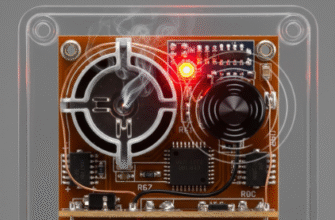Imagine lying back on a clear, dark night, far from city lights. You gaze up into the vast expanse, dotted with countless stars. Suddenly, a bright streak flashes across the sky, gone in an instant. You’ve just seen a shooting star! It feels magical, perhaps prompting a quick wish. But what exactly did you witness? Despite the romantic name, it wasn’t a star falling from its place in the heavens. What you saw was a tiny piece of space debris meeting a fiery end as it plunged into Earth’s atmosphere.
From Space Rock to Fiery Streak
What we call a shooting star is scientifically known as a meteor. This flash of light is generated by a small object called a meteoroid entering our planet’s protective atmospheric blanket. Meteoroids are essentially bits of rock or metal floating through space. They can be remnants from the formation of our solar system, fragments broken off asteroids during collisions, or dusty trails left behind by comets as they orbit the Sun.
It’s helpful to understand the terminology:
- Meteoroid: The object itself while it’s still drifting in space. Sizes vary enormously, but most of the ones that create visible meteors are surprisingly small, ranging from the size of a grain of sand to a pebble.
- Meteor: The visible phenomenon – the streak of light produced when a meteoroid enters the atmosphere and heats up due to interaction with air molecules. This is what we call a shooting star or falling star.
- Meteorite: If a piece of the meteoroid survives its fiery atmospheric journey and actually lands on Earth’s surface, that recovered fragment is called a meteorite. Finding one is quite rare!
The High-Speed Encounter
Space is mostly empty, but Earth’s orbit isn’t entirely clear. Our planet constantly sweeps through clouds of interplanetary dust and small debris. Meteoroids don’t just gently float into our atmosphere; they slam into it at incredible speeds. These velocities can range from around 11 kilometers per second (about 25,000 mph) to a staggering 72 kilometers per second (over 160,000 mph)! The exact speed depends on whether the meteoroid is catching up to Earth in its orbit or meeting it head-on.
Think about hitting the air at such tremendous speeds. Even though the air is very thin in the upper atmosphere (where meteors typically become visible, around 80 to 120 kilometers or 50 to 75 miles up), the impact is dramatic.
Why the Burn? It’s About Compression!
So, what causes the intense heat and light? Many people assume it’s solely due to friction, like rubbing your hands together quickly. While friction plays a part, the primary heating mechanism is actually ram pressure and air compression. As the meteoroid plows through the atmosphere at hypersonic speeds, it rapidly compresses the air directly in front of it.
When you compress a gas rapidly, its temperature skyrockets – this is known as adiabatic heating. The air in front of the meteoroid can be heated to thousands of degrees Celsius (or Fahrenheit), far hotter than the melting point of rock. This intense heat causes the surface layers of the meteoroid to vaporize instantly, a process called ablation.
It’s a common misconception that friction alone makes meteors burn. While friction contributes, the primary source of the intense heat is the rapid compression of air in front of the speeding meteoroid. This adiabatic heating raises air temperatures to thousands of degrees, vaporizing the object’s surface and ionizing the surrounding air molecules, creating the luminous trail we call a shooting star.
The superheated, glowing gas – composed of both vaporized meteoroid material and atmospheric gases excited by the heat and collisions – forms the visible streak we perceive as a meteor. The light isn’t necessarily the rock itself burning like a log in a fire, but rather this envelope of incandescent plasma trailing behind it. The intense heat and pressure usually destroy the small meteoroid completely long before it could ever reach the ground.
Color and Brightness
Have you ever noticed that some shooting stars seem to have different colors? The color of a meteor can depend on its chemical composition and its velocity. For example:
- Sodium (common in meteoroids) can produce an orange-yellow light.
- Iron often glows yellow.
- Magnesium can create blue-green light.
- Calcium might appear violet.
- Atmospheric nitrogen and oxygen molecules excited by the meteor’s passage often glow red or green.
Faster meteors tend to be brighter and may appear bluish or white due to the higher temperatures generated, while slower ones might seem yellower or redder.
When Shooting Stars Rain: Meteor Showers
Sometimes, you might see many more shooting stars than usual, seeming to radiate from a specific point in the sky. This is called a meteor shower. Meteor showers occur when Earth passes through the dense trail of dust and debris left behind by a comet (or occasionally an asteroid). As the comet orbits the Sun, it sheds particles along its path. When Earth intersects this stream, we encounter a higher concentration of meteoroids, resulting in a flurry of meteors.
Famous Examples
Some well-known meteor showers include:
- The Perseids: Occurring annually around mid-August, associated with Comet Swift-Tuttle. Often produces bright, fast meteors.
- The Geminids: Peaking in mid-December, unusually associated with an asteroid (3200 Phaethon). Known for often bright, sometimes intensely colored meteors.
- The Leonids: Happening in mid-November, linked to Comet Tempel-Tuttle. Famous for occasionally producing spectacular meteor storms with hundreds or even thousands of meteors per hour, though typically more modest.
During a shower, the meteors appear to originate from a point called the radiant, which is determined by the direction Earth is moving through the debris stream. However, the meteors themselves are occurring much closer, within our own atmosphere.
Tiny Specks, Big Show
It remains astounding that most of the captivating streaks of light we see as shooting stars are caused by objects no bigger than a grain of sand or a small pebble. Their immense speed is the key factor, converting kinetic energy into the heat and light that briefly illuminates the night sky. They are remnants of cosmic construction and demolition, tiny messengers from elsewhere in the solar system putting on a final, fleeting display as they encounter our world.
So, the next time you’re under a dark sky and witness that sudden flash of light, remember the incredible journey of that minuscule piece of space dust. It’s not a falling star, but a tiny cosmic visitor creating a spectacular, albeit brief, atmospheric light show – a testament to the dynamic and debris-filled nature of our solar system, all thanks to the physics of high-speed entry and burning space dust.







